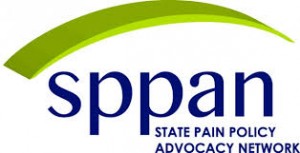 Many of you may not know that an amazing event occurred in Nashville, Tennessee the first weekend of March 2014. Fifteen organizations: 14 consumer pain advocacy organizations, moderated by the State Pain Policy Advocacy Network (SPPAN), gathered for two days to discuss common ground and take the first step towards working in coordination and collaboration with each other.
Many of you may not know that an amazing event occurred in Nashville, Tennessee the first weekend of March 2014. Fifteen organizations: 14 consumer pain advocacy organizations, moderated by the State Pain Policy Advocacy Network (SPPAN), gathered for two days to discuss common ground and take the first step towards working in coordination and collaboration with each other.
Our focus?
How can we better represent your needs, the needs of those living with pain by deciding to speak from one voice to influence change in how pain is viewed and how pain care is provided.
Much advance preparation occurred before this meeting took place including pre-surveys to investigate where there were mutual interests. After working in this field for over twenty years, I was not surprised to learn that other than public awareness, there was significant disagreement on needed activities and the right sequence of activities among these organizations. Observations were made known that there was great passion and dedication from all, yet our greatest strength is our greatest weakness. We communicate with zest and commitment, but collectively our messages are mixed and therefore confusing. As there are multiple intense efforts going on to promote our cause, there no synergy between groups and activities are worked on before strategy is set. The sense of urgency is holding us hostage.
The good news?
There is a high desire for an action plan that everyone will support. However, when something is proposed it is frequently countered with, “that’s not the way I would do it” or the feeling that some organizations make commitments, yet fail to follow through on assignments.
What did we learn to change our path?
Successful collaboration requires two essential elements: trust and a systematic decision making process. Betrayal of trust is considered the mortal sin of leadership. Failure to follow the key steps of decision making by jumping ahead sets the stage for failure in any collaboration. Ground rules were set early so everyone could work from the same place. These rules are universal and work well with diverse groups. They are:
- Check your organizational hat at the door
- Provide your best thinking about what can be
- Everything needs to be said, not everyone needs to say it
- Question to understand, not to argue
- Be on time
- Cell phones and side conversations outside the room
This makes me smile!
The biggest highlight for me, as it is for the TPC board and steering committee, was what I consider the most important and most promising result. We, together and in consensus, created four key talking points that all support and are willing to adopt. See what you think.
- Chronic pain is a real and complex disease that may exist by itself or be linked with other medical conditions.
- Chronic pain is an unrecognized and under resourced public health crisis with devastating personal and economic impact.
- Effective pain care requires access to a wide range of treatment options.
- Allowing people to suffer with unmanaged pain is immoral and unethical.
I, for one, am so proud of these clear, clean and crisp messages that can become our new building blocks to change our culture of pain and its treatment–in keeping with the Institute of Medicine’s report on pain released in June 2011, “Relieving Pain in America: A Blueprint for Transforming Prevention, Care, Education, and Research.”
Please send kudos to these organizations!
In attendance were:
- American Chronic Pain Association
- C-Change
- Chronic Pain Research Alliance
- Global Healthy Living Foundation
- Interstitial Cystitis Foundation
- National Fibromyalgia & Chronic Pain Association
- National Patient Advocate Foundation
- Neuropathy Association
- Pain Connection
- Pain Action Alliance to Implement a National Strategy (PAINS)
- Power of Pain Foundation
- Reflex Sympathetic Dystrophy Syndrome Association
- The Pain Community
- US Pain Foundation
One more: the American Cancer Society Cancer Action Network was unable to attend due to a schedule conflict, yet sent word of support and desire to be part of our future work.
Thank you SPPAN staff, 9By9Solutions, the American Academy of Pain Management and all others who made this event possible.
Keep watching, TPC members. There will be more to come! You have my promise.

Pretty Great, right?
Micke, what a great report. I guess there is hope that things can change for the betterment of all persons in pain. I love the 4 talking points, short and to the point.